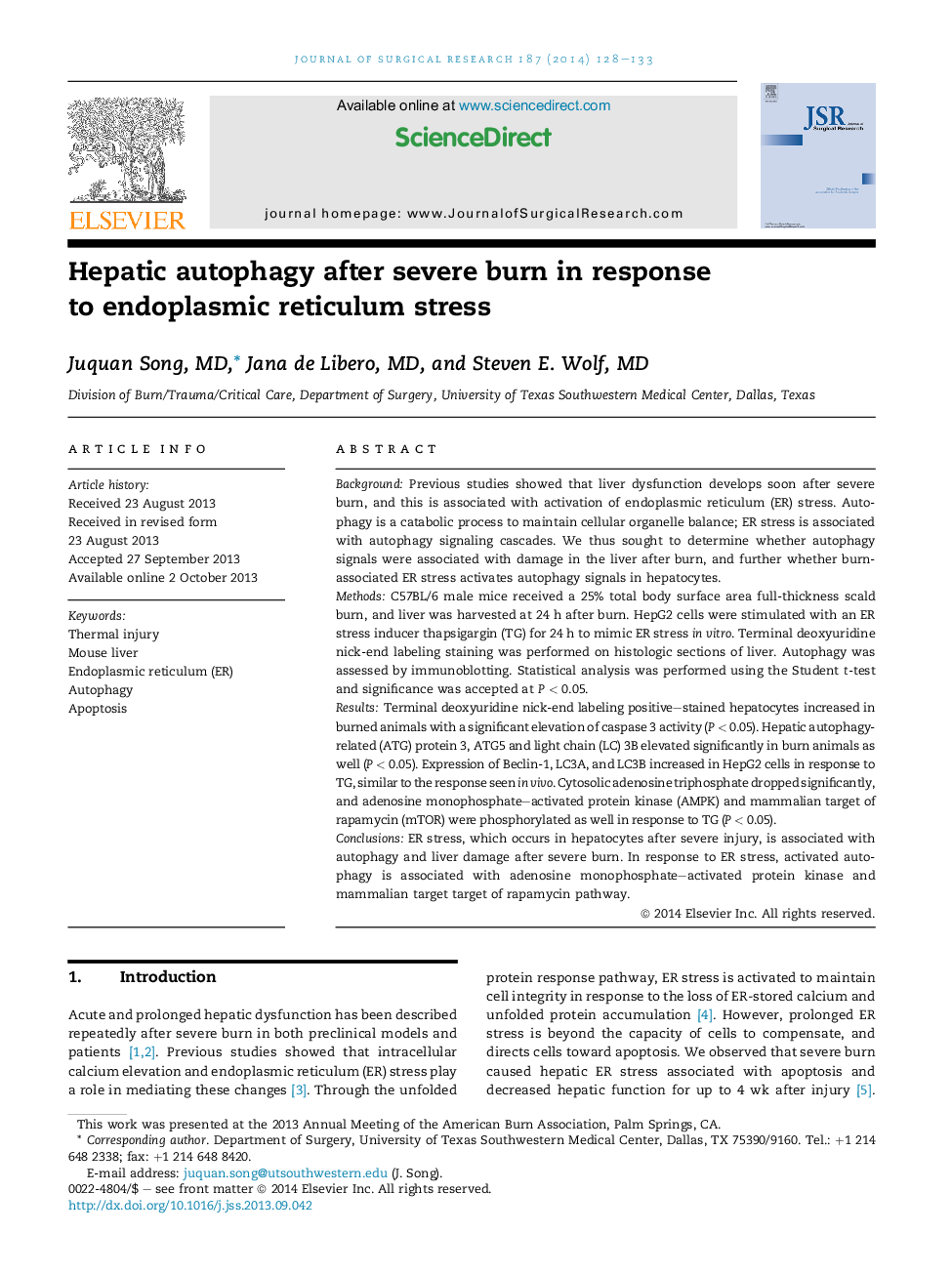| Article ID | Journal | Published Year | Pages | File Type |
|---|---|---|---|---|
| 4300282 | Journal of Surgical Research | 2014 | 6 Pages |
BackgroundPrevious studies showed that liver dysfunction develops soon after severe burn, and this is associated with activation of endoplasmic reticulum (ER) stress. Autophagy is a catabolic process to maintain cellular organelle balance; ER stress is associated with autophagy signaling cascades. We thus sought to determine whether autophagy signals were associated with damage in the liver after burn, and further whether burn-associated ER stress activates autophagy signals in hepatocytes.MethodsC57BL/6 male mice received a 25% total body surface area full-thickness scald burn, and liver was harvested at 24 h after burn. HepG2 cells were stimulated with an ER stress inducer thapsigargin (TG) for 24 h to mimic ER stress in vitro. Terminal deoxyuridine nick-end labeling staining was performed on histologic sections of liver. Autophagy was assessed by immunoblotting. Statistical analysis was performed using the Student t-test and significance was accepted at P < 0.05.ResultsTerminal deoxyuridine nick-end labeling positive–stained hepatocytes increased in burned animals with a significant elevation of caspase 3 activity (P < 0.05). Hepatic autophagy-related (ATG) protein 3, ATG5 and light chain (LC) 3B elevated significantly in burn animals as well (P < 0.05). Expression of Beclin-1, LC3A, and LC3B increased in HepG2 cells in response to TG, similar to the response seen in vivo. Cytosolic adenosine triphosphate dropped significantly, and adenosine monophosphate–activated protein kinase (AMPK) and mammalian target of rapamycin (mTOR) were phosphorylated as well in response to TG (P < 0.05).ConclusionsER stress, which occurs in hepatocytes after severe injury, is associated with autophagy and liver damage after severe burn. In response to ER stress, activated autophagy is associated with adenosine monophosphate–activated protein kinase and mammalian target target of rapamycin pathway.
